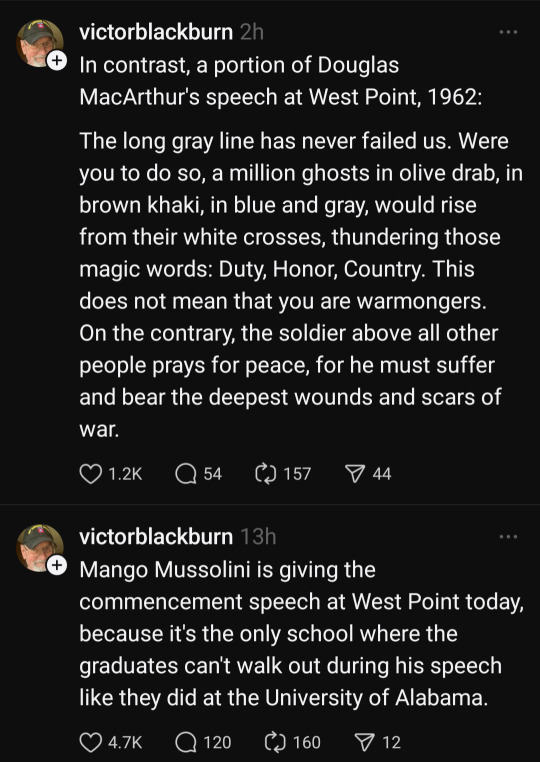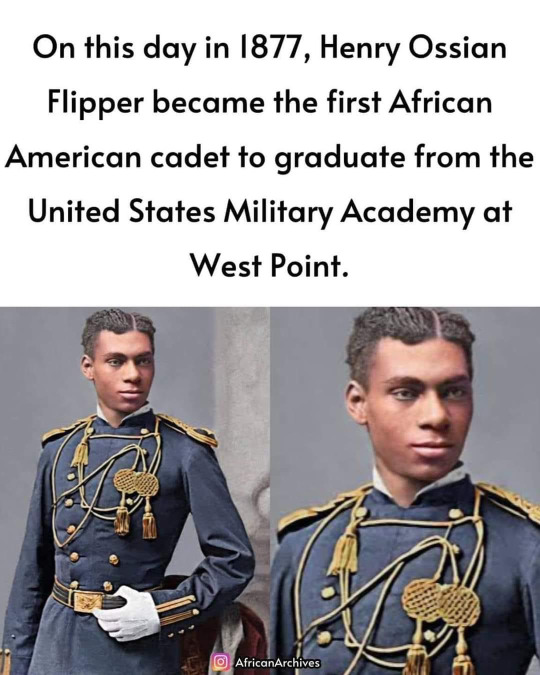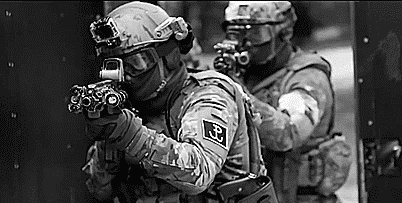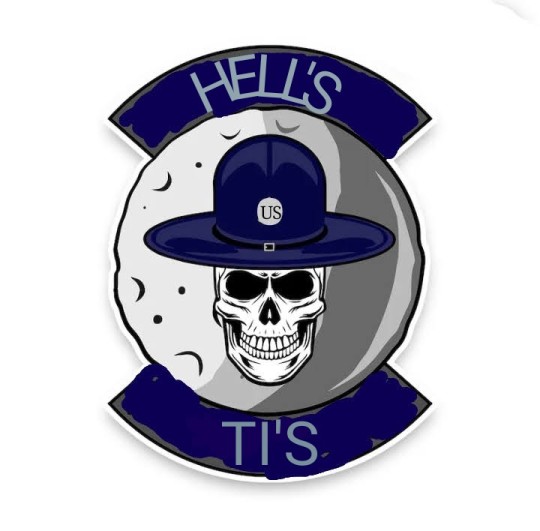#United States Military Academy
Explore tagged Tumblr posts
Text

(Taken from Facebook, my feed regenerated and I forget where exactly it is from, so I apologize for not giving the right person due credit. However, I think it is important enough to be spread around even if it is not properly attributed.) Trump’s West Point speech was packed with the kind of lunacy our mainstream media has tried to normalize for a decade but it sure doesn’t seem normal to me. In front of a crowd of cadets who had signed up to serve while Biden was president, Trump declared, “Just about a year ago, it was a big story, front page of every paper all over the world, that nobody wanted to enlist in our military,” completely ignoring the fact that just about every graduate in the room had done exactly that. He veered off into unrelated boasts, at one point claiming, “I rebuilt the military. We rebuilt it like nobody has ever rebuilt it before in my first term,” and even managed to squeeze in, “It gives us the right to do what we want to do,” making the event sound more like a campaign rally than a graduation.
The speech only got stranger as Trump wandered onto subjects like yachts, trophy wives, and even took time to attack celebrities, calling George Clooney a “fake movie actor.” He also boasted, “Sorry losers and haters, but my I.Q. is one of the highest – and you all know it! Please don’t feel so stupid or insecure, it’s not your fault.” His tendency to make everything about himself was on full display, and he only shook hands with a few select cadets, leaving most graduates unacknowledged.
In sharp contrast, Biden’s West Point address was uplifting, inclusive, and centered on the graduates and their future service. He told the cadets, “You’re about to become full-time members of the most honorable and the most consequential fighting force in the history of the world, that’s not hyperbole, of the world. That’s the truth.” Biden highlighted their diverse backgrounds and achievements, saying, “You make our entire nation proud, and that’s not hyperbole. You do.” He reminded them to “hold fast to your values you learned here at West Point: duty, honor, country,” and emphasized, “We’re the only country in the world founded on an idea, not figuratively, literally. And the idea is we’re all created equal, deserve to be treated equally throughout our lives”.
Most tellingly, Biden stood for over an hour, shaking the hand of every single graduate, making a point to honor each cadet personally. His speech was a celebration of service, unity, and American ideals, leaving the class inspired and seen, a far cry from Trump’s self-congratulatory, grievance-filled performance. What an embarrassment that man is to our country.

#christofascists#west point#us army#trump regime#fuck trump#graduation speech#class of 2025#dugout doug#douglas macarthur#us military#usa usa usa#murica#united states military academy#military industrial complex
26 notes
·
View notes
Text


#african#afrakan#kemetic dreams#africans#afrakans#brown skin#brownskin#henry ossian flipper#african american#united states military academy#west point#military#military history#military industrial complex#soldiers
93 notes
·
View notes
Text

#plebe barracks room#barracks#west point#westpoint#united states military academy#usa military academy#cadets#rooms#places#found images
0 notes
Text
Trump Appoints Michael Flynn, Walt Nauta and Other Allies to Oversee U.S. Military Academies
President Trump moved on Monday to stack the boards overseeing U.S. military service academies with conservative activists and political allies, including Michael T. Flynn and Walt Nauta, who were charged in connection to earlier investigations of Mr. Trump and his presidential campaign. Mr. Nauta, a military aide working as a White House valet while Mr. Trump was president, was appointed to the…
#Annapolis (Md)#Bannon#Colorado#Dina#Donald J#Flynn#Maryland#Michael T#Nauta#Powell#Sean M (1971- )#Spicer#Stephen K#Trump#United States Air Force Academy#United States Military Academy#United States Naval Academy#Walt#West Point (NY)
0 notes
Text
Kanye Udoh Shines as Army Defeats Air Force 20-3
Photo Credit: Margaret Kite In the second leg of the Commander-in-Chief’s Trophy, the Army Black Knights would take on their bitter rivals from Colorado Springs, the Air Force Falcons. The stage was set for the 21st ranked Black Knights to improve their record to 8-0, against a team that is 2-9 in their last 11 games since Army beat them one year ago. This time around the roles were reversed.…
#Air Force Academy#Army Football#Bryson Daily#Casey Larkin#Dewayne Coleman#Jeff Monken#Josh Johnson#Kanye Udoh#Max DiDomenico#Quentin Hayes#Trey Gronotte#United States Military Academy
0 notes
Text
Hogwarts and West Point: Unveiling the Shared Virtues of Magical and Military Academies
In a world where tradition and timeless virtues lay the foundation for growth and leadership, two academies stand as beacons for shaping character and courage: Hogwarts School of Witchcraft and Wizardry and the United States Military Academy at West Point. While one belongs to the magical realm and the other to the realm of discipline and duty, the principles that drive students at both…

View On WordPress
#bravery#duty#Hogwarts#honor#integrity#leadership#learning#loyalty#personal development#respect#teamwork#United States Military Academy#West Point#wisdom
0 notes
Text
Trump orders immediate dismissal of military academy boards of visitors
#donald trump#military academy#us military#us armed forces#united states armed forces#social justice#us politics
7 notes
·
View notes
Video
Grumman Greenhouse [IMG_0148] by Kesara Rathnayake Via Flickr: Sculpture by Jordan Griska. Photo taken near Pennsylvania Academy of the Fine Arts in Philadelphia.
#Grumman Greenhouse#sculpture#Jordan Griska#airplane#aeroplane#crash#crashed#plane crash#grumman#Grumman S2F#s2f#military#Philadelphia#USA#united states of america#street art#street#Pennsylvania Academy of the Fine Arts#iPhone#iPhone 13 mini#foto#photo#photography#travel#travel photography#2022#Flickr21Challenge#bold#flickr
3 notes
·
View notes
Text

#military art#war art#military#military cartoons#air force#air planes#army#marines#art#weapons of war#women in uniform#civil war#world war 2#united states air force#us space force#ships#tanks#us naval academy#vietnam war#korean war#us army air corps#us air base#bomber#basic training
2 notes
·
View notes
Text
Secret Strategies You Need To Follow For AFOQT TEST
ASVAB test, along with their step-by-step solutions. These focus on real-world problem solving, conversions, proportions, and logic—core skills the test evaluates.

GET OUR FREE VIDEO TUTORIAL AND PROBLEM SOLVING 👈.
Mixture Problem: Q: How many liters of 20% alcohol solution must be mixed with 10 liters of 50% solution to make a 30% solution?
A: Let x = liters of 20% solution 0.2x + 0.5(10) = 0.3(x + 10) 0.2x + 5 = 0.3x + 3 2 = 0.1x → x = 20 liters
Simple Interest Q: What is the simple interest on $1,200 at 6% for 3 years?
A: Interest = P × R × T = 1200 × 0.06 × 3 = $216
Marked-up Price Q: A shop buys a shirt for $12 and sells it for $18. What is the profit percentage?
A: Profit = 18 − 12 = $6 % Profit = (6/12) × 100 = 50%
#navy officer test#us navy officer test#u.s. navy#marine officer test#oar online classes#oar online test#oar test prep#us navy test#oar test#oar classes#afoqt online classes#afoqt practice test#afoqt study tips#afoqt online test#afoqt test prep#air force 1#air conditioning#air force#air jordan#air force training#air force one#air force falcons#air force academy#us air force#us navy#us marines#u.s. air force#u.s. military#united states navy#math class
0 notes
Text
Philippine Military Academy (PMA) Graduates release Manifesto supporting Dr. Lorraine Badoy and Jeffrey Celiz, demands their Immediate Release
#philippine military academy pma#lorraine badoy#jeffrey celiz#ka eric#china#united states us#philippines#google#bing
0 notes
Text

Emily Jazmin Tatum Perez (19 February 1983 – 12 September 2006) was an African-American military officer. After graduating from the United States Military Academy at West Point, Second Lieutenant Perez was serving in the Iraq War when she was killed in action by an improvised explosive device. She became the first black female officer in U.S. military history to die in combat and the first female graduate of West Point to die in Iraq.
#black tumblr#black history#black excellence#black community#black literature#black history is american history#civil rights#blackexcellence365#black girl magic#beautiful#black people#black woman#black lives matter#history#historical#us army#west point#college education
945 notes
·
View notes
Text
Remember that in an age where records don’t have to be kept in physical books, book burnings don’t have to include physical flames
407 notes
·
View notes
Text
Naval Academy reinstates hundreds of ‘DEI’ books
#naval academy#navy#us navy#us military#united states armed forces#us armed forces#diversity#equity#dei#books#booklr#books and reading#book banning#freedom of speech#free speech#first amendment#donald trump#trump administration#republicans#gop#federal government#human rights#civil rights#social justice#us politics
0 notes
Text
I think there’s a lot of top gun fans/fic writers who don’t know what the Academy actually is. Which is fine because it’s a military propaganda movie. However, since the Academy is a major part of Maverick’s and Rooster’s stories, here’s a little info dump about USNA and why it’s important in the world of Naval Aviation.
The United States Naval Academy (USNA or the Academy) is a military academy. It’s a four-year university. Acceptance is limited and the application process is competitive and difficult. Applicants must have a letter of recommendation from their current Congressman and they also must have proof of high level academic achievement and be able to meet all physical and medical qualifications required to join the Navy. Tuition is covered in full by the military. Midshipmen (students) graduate with a bachelor degree in the major of their choice and a commission into the Navy. It’s a military academy, so obviously it’s not exactly the typical college environment/experience. (Don’t worry they still have a football team and a mascot!)
Just under 40% of naval aviators receive their commission from USNA. Just over 40% receive their commission from a NROTC program at a four-year university. The academy isn’t the only way to get into naval aviation but it is a big deal that Mav and Rooster didn’t go, mostly because they both come from military families. (whose parents died in active duty)
I’m not in the Navy nor am i affiliated with it, but I do know more about the Navy than a boring civilian probably should. I live in a Navy town and my dad is a history buff who knows a lot of military history. (Have I learned more because I can’t be normal about Top Gun? Yes.) Anyway, I hope this is helpful to Top Gun fans who aren’t really familiar with the US Navy.
Feel free to add or correct me if there’s anything that’s incorrect. Also feel free to ask if there’s something that you want to know and I’ll do my best to answer!
#top gun#top gun maverick#us navy#us naval academy#please don’t let this find real military people#this is the best I could do as someone who’s literally not involved with the navy in any way#bradley rooster bradshaw#pete maverick mitchell#rooster#maverick
85 notes
·
View notes
Text

🏈 Did you know that before becoming a five-star general and the 34th President of the United States, Dwight D. Eisenhower took the field as a football player at the U.S. Military Academy at West Point?
In this historic photo from 1912, Eisenhower is captured kicking a football, showcasing the discipline and teamwork he carried throughout his life. While an injury cut short his football career, his time on the field undoubtedly shaped his leadership and determination. 📸: Dwight Eisenhower kicking a football at the U.S. Military Academy at West Point, New York, 1912.
https://catalog.archives.gov/id/7671055
96 notes
·
View notes